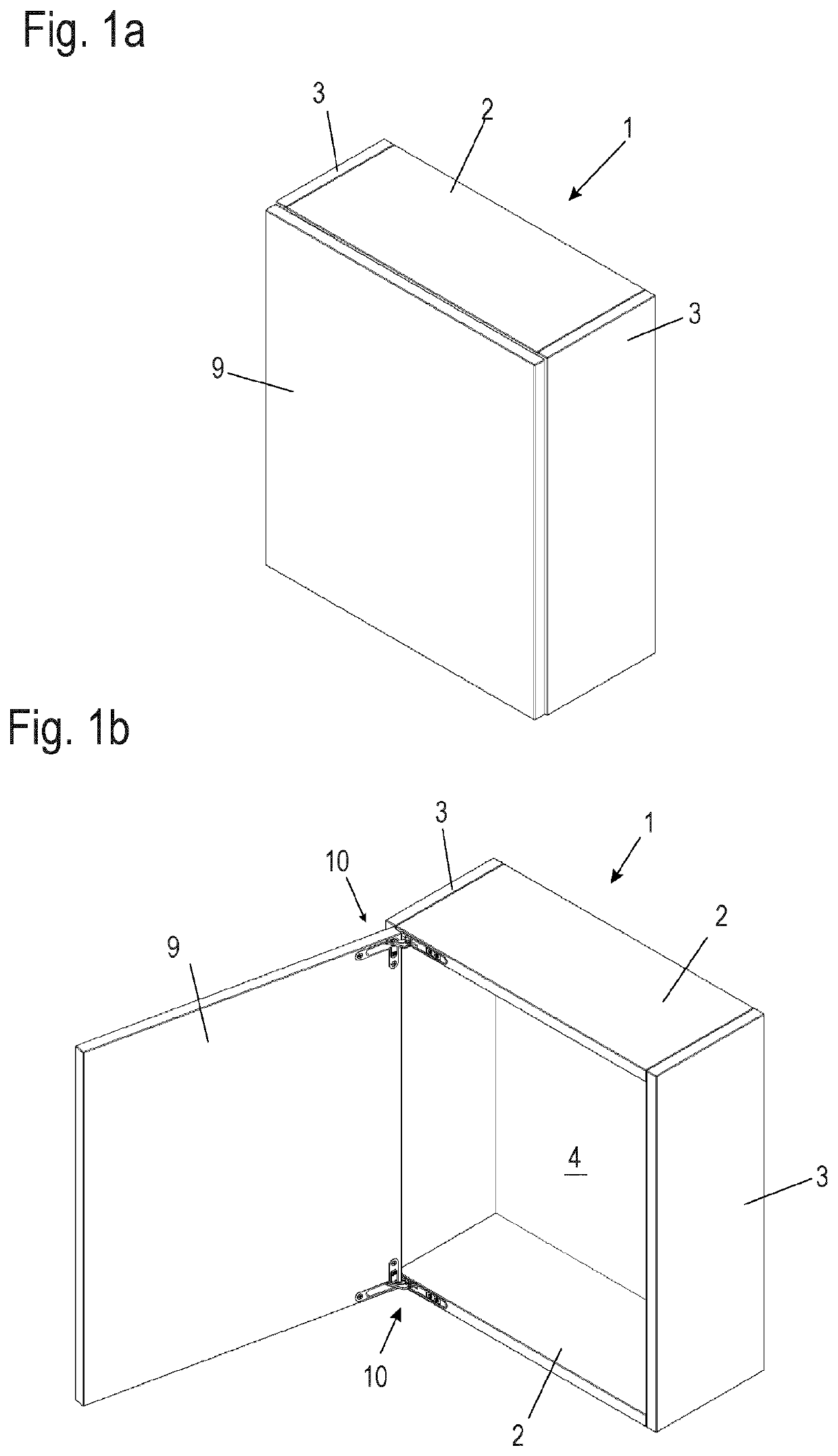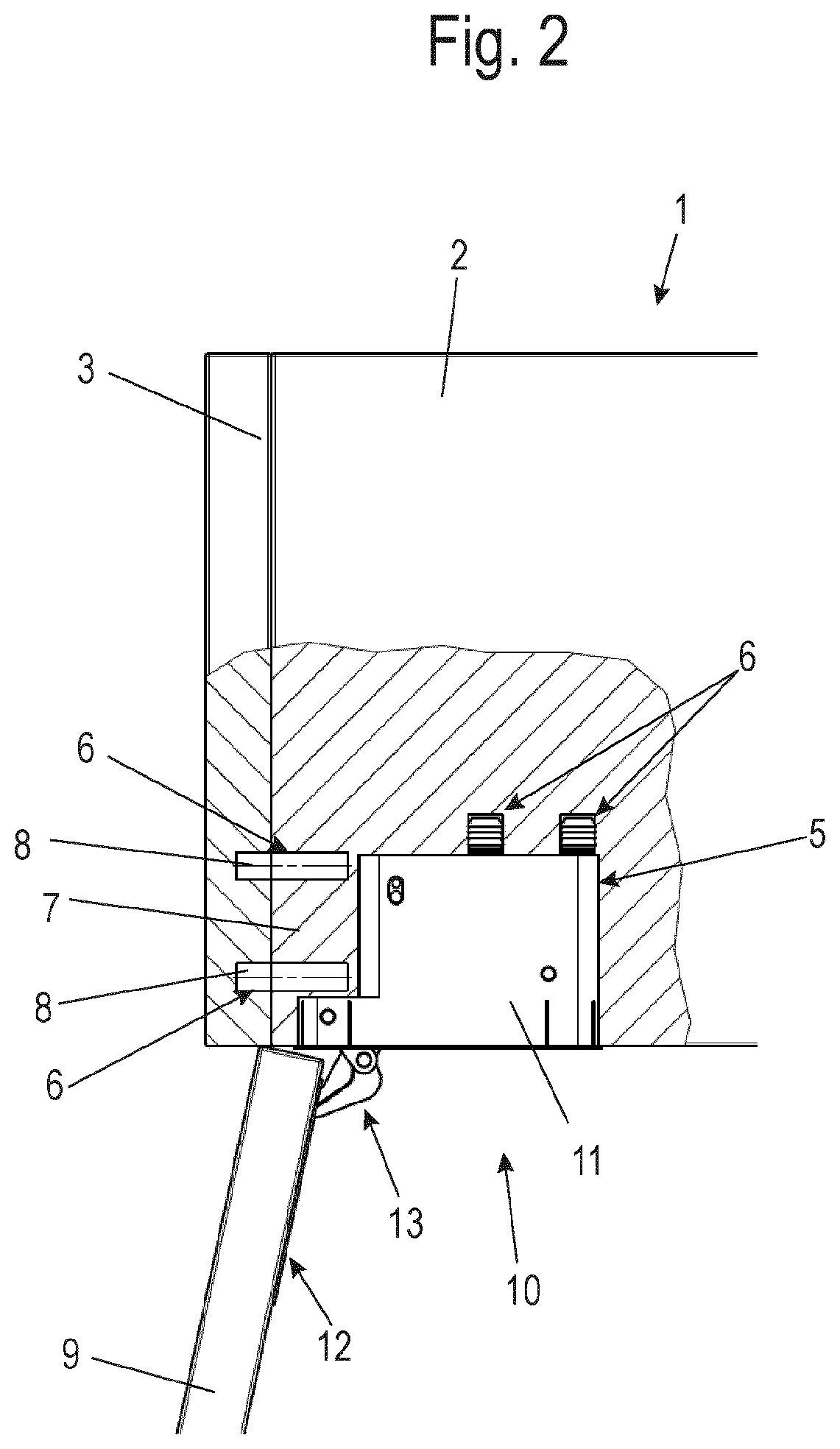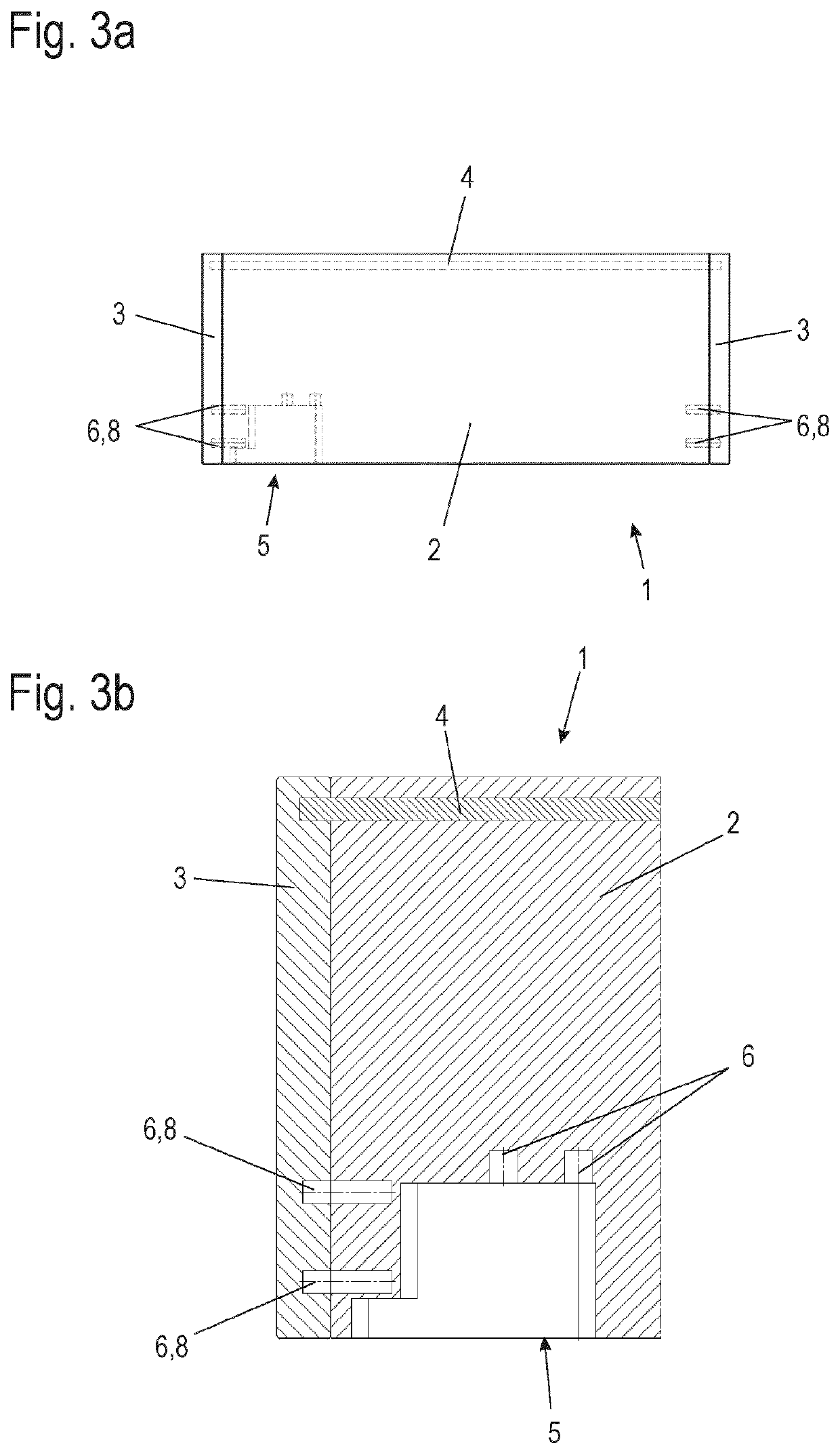Hinge for a furniture door, and furniture carcass having such a hinge
a technology for furniture carcasses and hinges, which is applied in the direction of hinges, wing accessories, furniture parts, etc., can solve the problems of obstructing the free and arbitrary design of the interior affecting the stability of the furniture carcass, and unable to arrange the connecting elements between the top or bottom panel
- Summary
- Abstract
- Description
- Claims
- Application Information
AI Technical Summary
Benefits of technology
Problems solved by technology
Method used
Image
Examples
Embodiment Construction
[0037]An example of a furniture carcass 1 having a furniture door 9 is shown in an isometric view in each of FIGS. 1a, b.
[0038]By way of example, the carcass of a cabinet which is not very deep, for example, a wall unit, is shown as the furniture carcass 1. It is obvious that the illustrated furniture carcass 1 is solely an example of the use of a hinge according to the application and the hinge can be used in other furniture carcasses or pieces of furniture having a furniture door.
[0039]The furniture carcass 1 comprises two panels 2, a top panel and a bottom panel. These are arranged between two side walls 3. The furniture carcass 1 furthermore has a rear wall 4.
[0040]A furniture door 9 attached on the left side is provided in the example of FIGS. 1a and 1b, which is pivotably guided by hinges 10. The pivot axis extends in parallel and in the region of a front narrow side of the left side wall 3 in the figure.
[0041]Terms used in the context of the description such as “top”, “botto...
PUM
 Login to View More
Login to View More Abstract
Description
Claims
Application Information
 Login to View More
Login to View More - R&D
- Intellectual Property
- Life Sciences
- Materials
- Tech Scout
- Unparalleled Data Quality
- Higher Quality Content
- 60% Fewer Hallucinations
Browse by: Latest US Patents, China's latest patents, Technical Efficacy Thesaurus, Application Domain, Technology Topic, Popular Technical Reports.
© 2025 PatSnap. All rights reserved.Legal|Privacy policy|Modern Slavery Act Transparency Statement|Sitemap|About US| Contact US: help@patsnap.com



